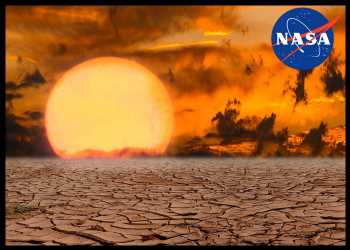If global temperatures keep rising and reach 2 degrees Celsius (3.6 degrees Fahrenheit) above pre-industrial levels, communities worldwide could face multiple impacts of climate change simultaneously, a NASA-led study reveals.
The researchers found that more than a quarter of the world’s population could experience an additional month of severe heat stress each year compared to the middle of the 20th century (1950-1979). High temperatures and drought could combine dangerously in places like the Amazon, increasing the risk of wildfire. In the American West, extreme fire weather will likely be more intense and last longer, according to the study that analyzed the projected impacts of such warming to understand how different climate effects might combine.
A 2-degree rise in global temperatures is considered a critical threshold above which dangerous and cascading effects of human-generated climate change will occur.
With the new dataset in hand, NEX researchers at Ames analyzed the downscaled projections to assess the changes predicted for six key climate variables. They examined changes in air temperature, precipitation, relative humidity, short- and longwave solar radiation, and wind speed at a point when warming passes 2°C.
“We wanted to study how these aspects of the environment are projected to change and what their combined impacts could mean for people around the world,” said Taejin Park, first author on the paper and a researcher at Ames with the Bay Area Environmental Research Institute (BAERI).
The researchers paid special attention to two climate indicators: heat stress – or the combined effects of temperature and humidity on the human body – and fire weather – which considers temperature, rainfall, humidity, and wind. Most regions of the world will experience higher heat stress, they found, while countries closer to the equator will suffer from a greater number of days considered extreme.
“The escalating impacts of all the climate extremes studied could cause significant damage to communities and economies, from fires, floods, landslides, and crop failures that may result,” said Ramakrishna Nemani, senior scientist at BAERI and co-author of the study.
NEX scientists hope that the downscaled climate projections could help decision-makers prepare for and protect their regions against climate impacts.
Source: Read Full Article

